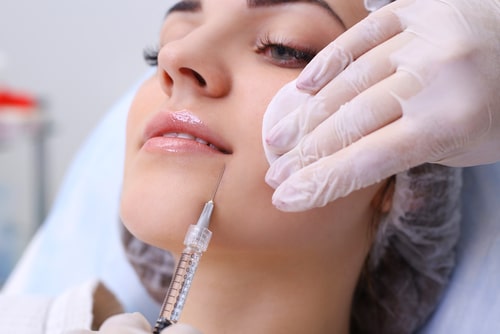June 03, 2019 | 3 minute read
Collagen is a word commonly found in the descriptions of dietary supplements, lotions and creams, cosmetic lasers, and injectable treatments. The word is used so often that most people assume that it plays an important role; however, many do not know what that role is. Collagen is the most significant factor in the way your skin ages, and it does not always get the respect it deserves.

We all want to blame external factors like sun damage, diet, stress, and the undefinable ‘normal rate of aging’ for our lines and wrinkles; however, these are only contributors to facial aging. The real reason is the loss of collagen. Collagen is a protein found in your muscles, tendons, bones, ligaments, and skin. It is created by fibroblasts, cells that make up the connective tissues in the body and acts as the main support structure for your dermis. Without collagen, your skin would have no structure, elasticity, moisture. It is for these reasons that collagen is essential for youthful-looking skin.
Unfortunately, while collagen is abundant during your youth, it does not last. The production of collagen starts to diminish around the age of 20. Every individual loses at least one percent of collagen every year after that, and external factors like prolonged exposure to UV light, smoking, excessive drinking, and harsh environments only exacerbate the issue. When this occurs, the skin loses its internal support, which causes sagging and wrinkles. Essentially, the more collagen you lose, the more you experience noticeable facial aging. For many men and women, this can begin as early as their 30s.
What Injectables Stimulate Collagen Production?
Many surgical procedures, like facelift surgery and fat grafting, aim to restore the damage caused by the loss of collagen, and while they are useful they do not stimulate collagen production and are therefore unable to slow the rate at which your skin ages in the future. Many injectable treatments work to stimulate the production of collagen to help counteract the loss of this vital protein. Two types of fillers stimulate collagen production: hyaluronic acid and calcium hydroxylapatite. Hyaluronic acid fillers like JUVÉDERM®, Restylane®, and Revanesse® Versa™ combat the volume loss that is caused by diminished collagen. These fill facial hollows, smooths lines, and stimulates the production of this vital ingredient in the lower two-thirds of the face. Hyaluronic acid is a naturally-occurring particle in the body that attracts and preserves moisture. Calcium hydroxylapatite, the main ingredient in RADIESSE®, is a calcium-based microsphere that also stimulates collagen production and helps to restore facial volume in the middle regions of the face, such as the nasolabial folds. Both hyaluronic acid and calcium hydroxylapatite are absorbed by the body after several months, leaving behind volumizing collagen. These injectable treatments can be repeated as often as necessary to maintain and restore youthful facial contours.
To learn more about how injectable treatments can combat your facial aging, contact Dr. Wilson by calling (256) 551-2002 or by filling out our online contact form.

